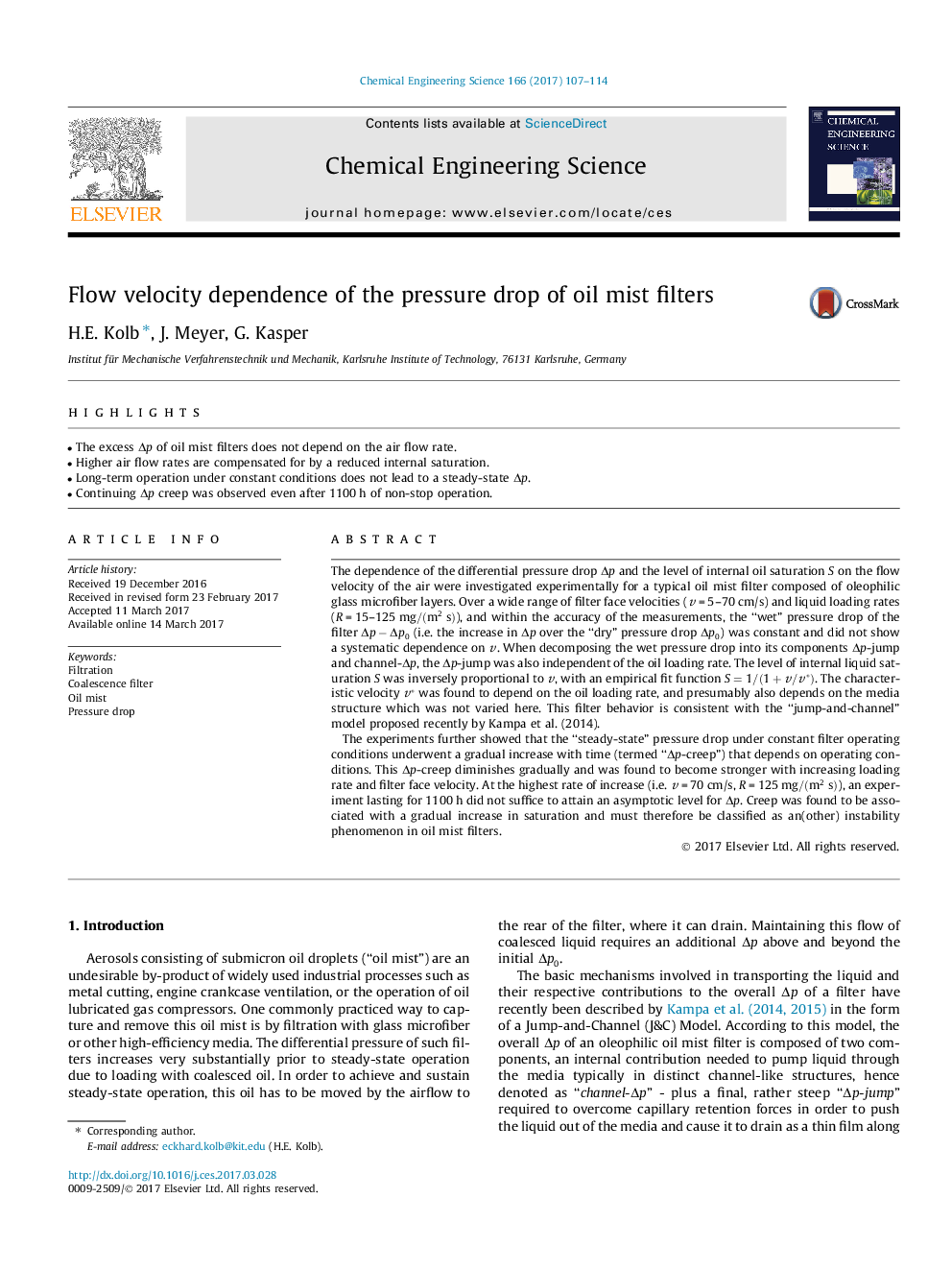| کد مقاله | کد نشریه | سال انتشار | مقاله انگلیسی | نسخه تمام متن |
|---|---|---|---|---|
| 6467642 | 1423253 | 2017 | 8 صفحه PDF | دانلود رایگان |
- The excess Îp of oil mist filters does not depend on the air flow rate.
- Higher air flow rates are compensated for by a reduced internal saturation.
- Long-term operation under constant conditions does not lead to a steady-state Îp.
- Continuing Îp creep was observed even after 1100Â h of non-stop operation.
The dependence of the differential pressure drop Îp and the level of internal oil saturation S on the flow velocity of the air were investigated experimentally for a typical oil mist filter composed of oleophilic glass microfiber layers. Over a wide range of filter face velocities (v = 5-70 cm/s) and liquid loading rates (R = 15-125 mg/(m2s)), and within the accuracy of the measurements, the “wet” pressure drop of the filter Îp-Îp0 (i.e. the increase in Îp over the “dry” pressure drop Îp0) was constant and did not show a systematic dependence on v. When decomposing the wet pressure drop into its components Îp-jump and channel-Îp, the Îp-jump was also independent of the oil loading rate. The level of internal liquid saturation S was inversely proportional to v, with an empirical fit function S=1/(1+v/vâ). The characteristic velocity vâ was found to depend on the oil loading rate, and presumably also depends on the media structure which was not varied here. This filter behavior is consistent with the “jump-and-channel” model proposed recently by Kampa et al. (2014).The experiments further showed that the “steady-state” pressure drop under constant filter operating conditions underwent a gradual increase with time (termed “Îp-creep”) that depends on operating conditions. This Îp-creep diminishes gradually and was found to become stronger with increasing loading rate and filter face velocity. At the highest rate of increase (i.e. v = 70 cm/s, R = 125 mg/(m2s)), an experiment lasting for 1100 h did not suffice to attain an asymptotic level for Îp. Creep was found to be associated with a gradual increase in saturation and must therefore be classified as an(other) instability phenomenon in oil mist filters.
Journal: Chemical Engineering Science - Volume 166, 20 July 2017, Pages 107-114
